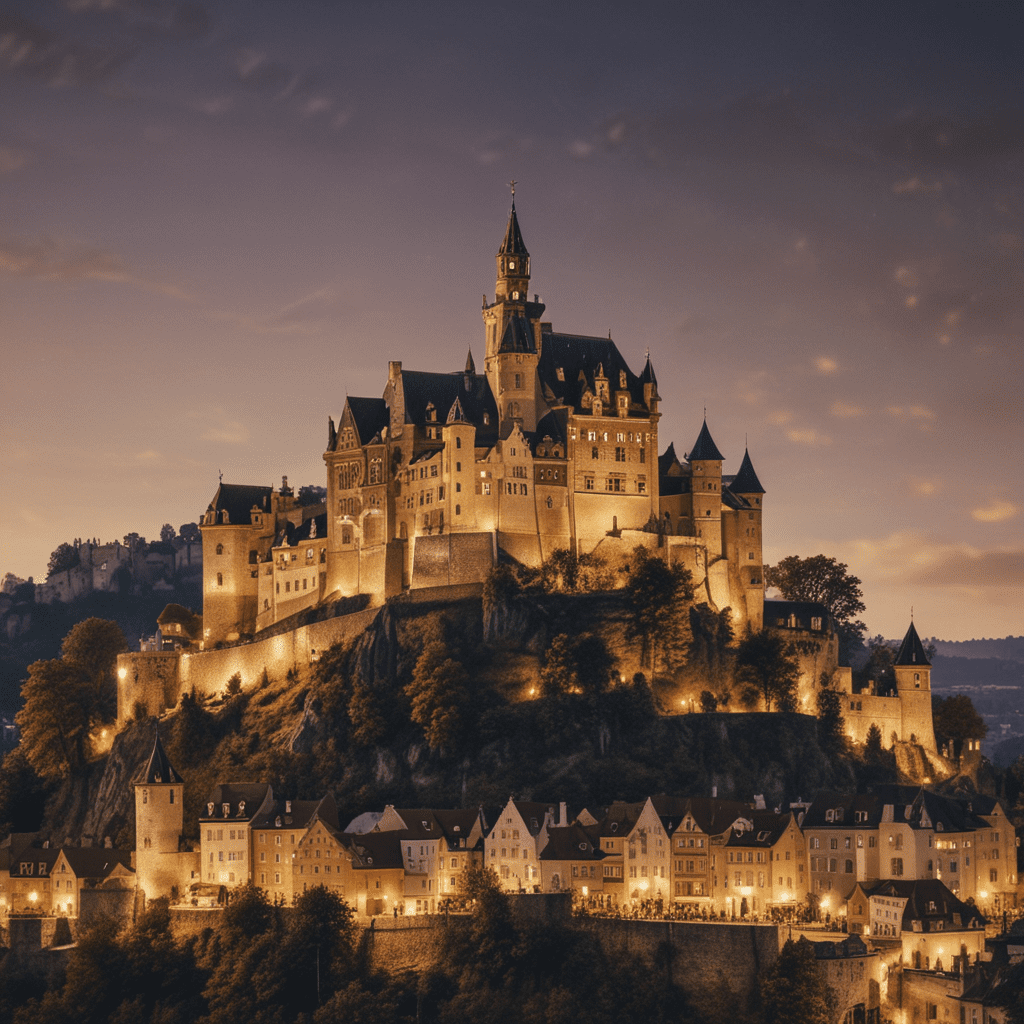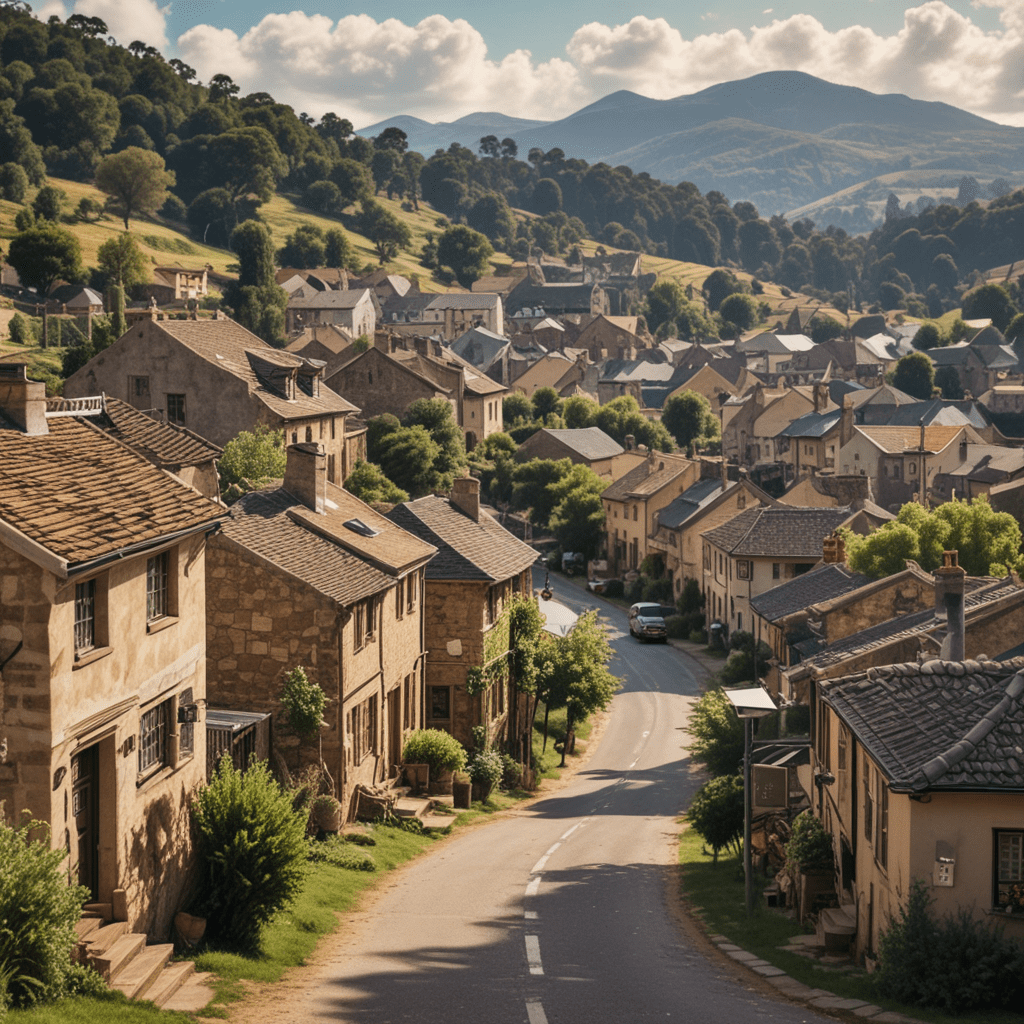
The Fascinating History of the Riegersburg Castle
Nestled atop a towering volcanic rock formation in eastern Austria, the Riegersburg Castle stands as a testament to centuries of rich history and captivating tales. From its humble beginnings to its rise as a formidable stronghold, and subsequent decline and eventual restoration, the castle has witnessed countless events that have shaped its legacy.
The Early Years:
The origins of the Riegersburg Castle can be traced back to the 11th century when a wooden fort was erected upon the volcanic hill. During the 12th century, this fort was expanded into a stone castle by the Lords of Riegersburg, who gave the castle its name. The castle's strategic location on the border between Styria and Hungary made it a crucial defensive outpost.
The Rise of the Rieger Family:
The Rieger family played a pivotal role in the castle's development. In the 13th century, they acquired the castle and began a period of extensive expansion and fortification. They added a strong outer wall, as well as several towers and residential buildings, transforming the castle into a formidable fortress. The Riegers also established a thriving market town at the foot of the castle, which contributed to its growing prominence.
The Castle's Siege and Destruction:
In 1480, the Riegersburg Castle faced its greatest challenge when it was besieged by the Hungarian King Matthias Corvinus. The siege lasted for over a year, and the castle's defenders were pushed to their limits. Despite their valiant efforts, the castle eventually succumbed to Corvinus' forces and was set ablaze. The Riegersburg Castle lay in ruins for over a century.
Reconstruction and Expansion:
Following the castle's destruction, it was acquired by the Habsburg emperor, Ferdinand II. In the early 17th century, he commissioned a major reconstruction and expansion project. The castle was rebuilt with stronger fortifications, including a new outer wall and a series of advanced defense systems. It also gained a new palace, chapel, and other grand structures, transforming it into a magnificent residence.
The Golden Age of the Castle:
During the 17th and 18th centuries, the Riegersburg Castle flourished as a thriving center of commerce and culture. It became the residence of the Prince-Bishops of Seckau, who transformed it into a magnificent palace. The castle welcomed numerous visitors, including royalty and renowned artists. The period was marked by opulence and grandeur, leaving a lasting mark on the castle's architectural legacy.
The Ottoman Invasions:
The Riegersburg Castle faced a new threat in the 16th and 17th centuries with the Ottoman invasions. The formidable fortifications proved their worth as the castle successfully resisted several Ottoman sieges. Its strategic location and strong defenses played a crucial role in safeguarding the surrounding region from the advancing Ottoman forces.
The Habsburg Era:
After the Ottoman threat subsided, the Riegersburg Castle entered a period of stability under the Habsburg rule. The castle served as a military garrison and an administrative center. It also underwent further expansion and renovation, including the addition of a new arsenal and a modernized defense system.
The Castle as a Military Stronghold:
Throughout its history, the Riegersburg Castle served as a critical military stronghold. Its commanding position and robust fortifications made it virtually impregnable. During the Napoleonic Wars, the castle played a significant role, housing a large garrison that protected the region from French incursions.
Decline and Restoration:
In the 19th century, the Riegersburg Castle lost its military significance. It was gradually abandoned and fell into disrepair. In the early 20th century, the castle was acquired by the Prince of Liechtenstein, who initiated a comprehensive restoration project. The castle was meticulously restored to its former glory, becoming a popular tourist destination and a testament to its resilience throughout the centuries.
The Riegersburg Castle Today:
Today, the Riegersburg Castle stands as a magnificent monument, open to the public for guided tours. Visitors can explore its opulent halls, secret chambers, and impressive defense systems. The castle hosts various events and exhibitions, showcasing its rich history and cultural significance. It remains a symbol of the region's heritage and a beacon of architectural prowess.
FAQ:
Q: What is the Riegersburg Castle known for?
A: The Riegersburg Castle is renowned for its captivating history, architectural grandeur, and strategic significance. It has witnessed centuries of battles, expansions, and cultural flourishing, making it a testament to human resilience and ingenuity.
Q: Can I visit the Riegersburg Castle?
A: Yes, the Riegersburg Castle is open for guided tours. Visitors can explore its opulent halls, discover its secret chambers, and marvel at its impressive defense systems. It offers a fascinating journey through the castle's rich history and cultural heritage.
Q: How old is the Riegersburg Castle?
A: The origins of the Riegersburg Castle can be traced back to the 11th century when a wooden fort was erected upon a volcanic hill. Over the centuries, it underwent numerous expansions and renovations, evolving into the impressive structure it is today.


